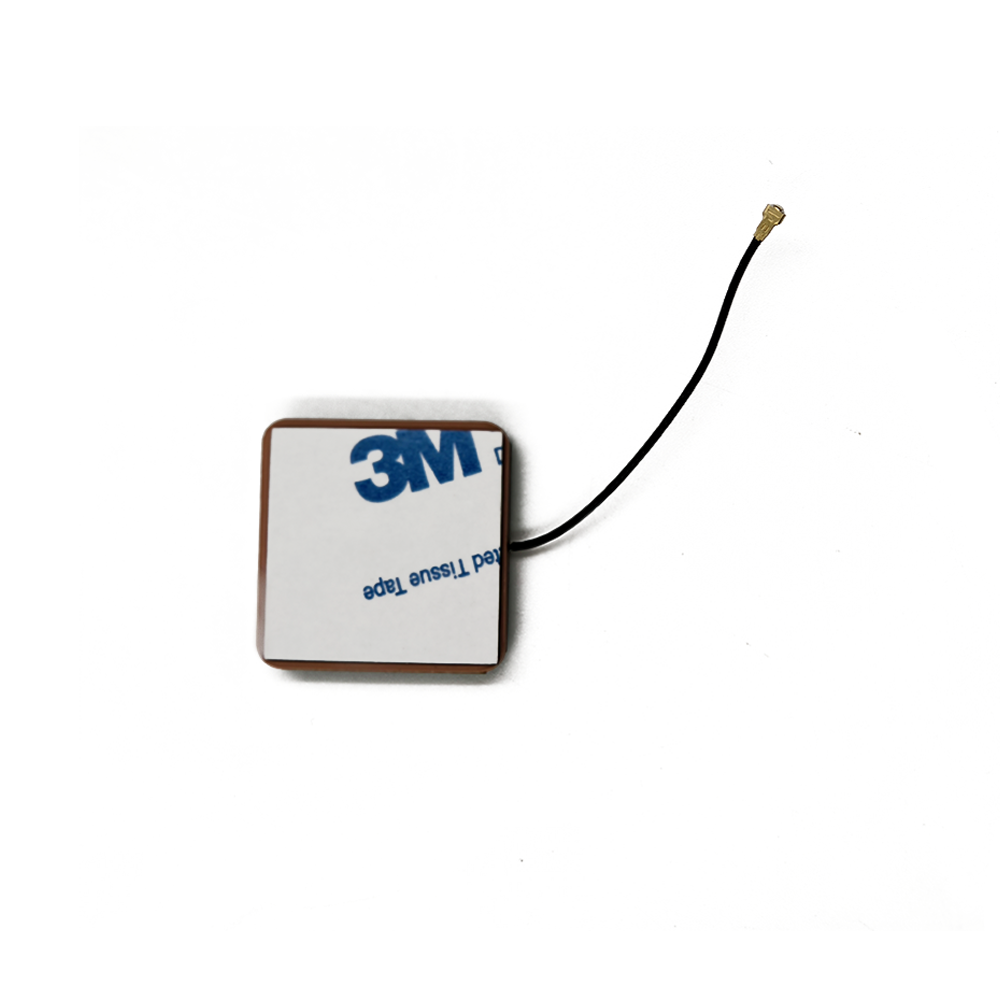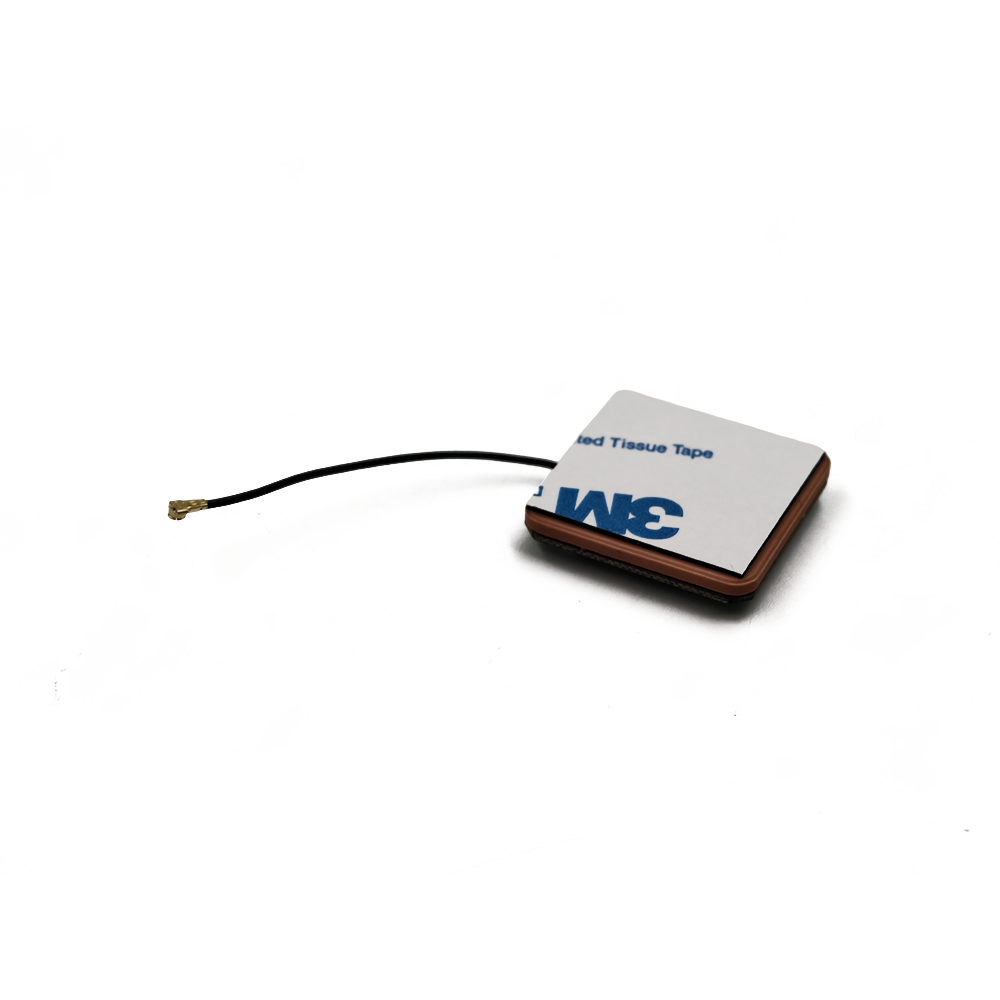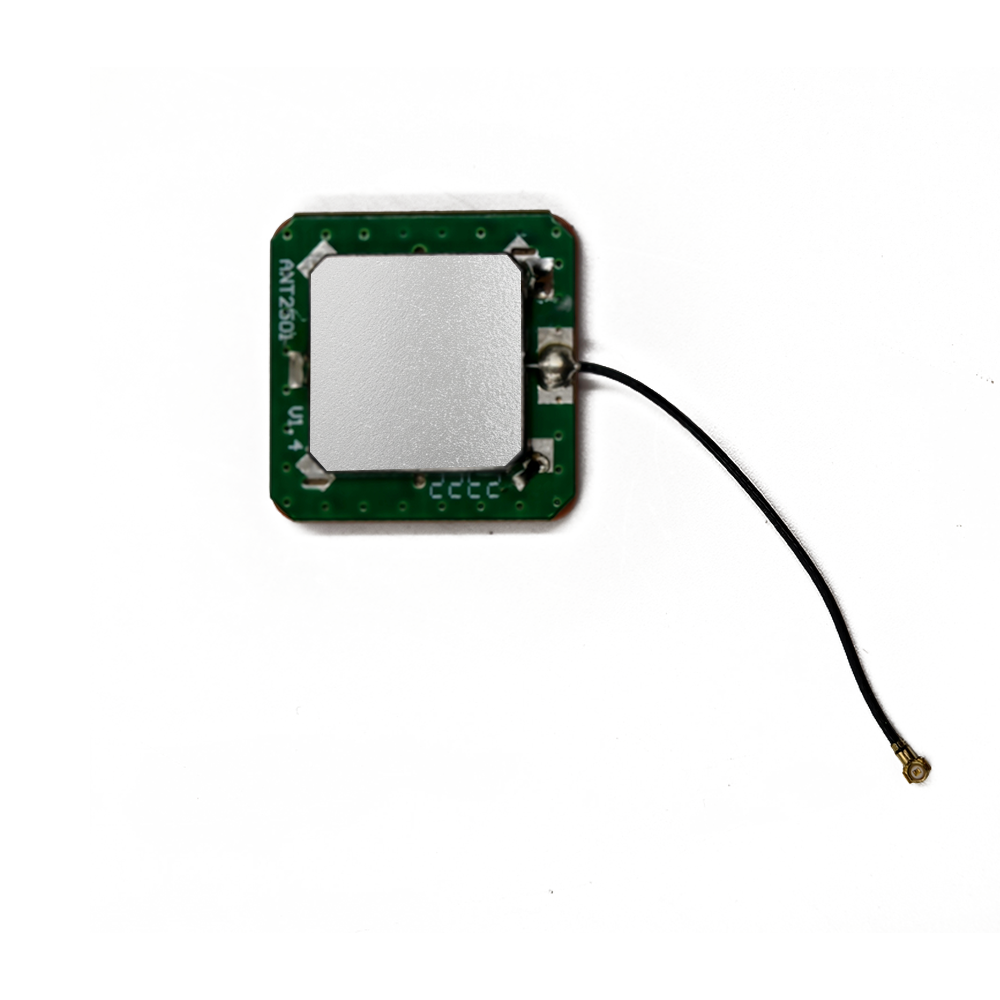Active GNSS ceramic antennas have emerged as a critical enabling technology for high-performance UAV navigation systems. Their integration into modern unmanned platforms offers a range of compelling advantages that directly address the unique operational demands of aerial robotics. However, like any advanced technology, they also present certain engineering and operational challenges that must be carefully managed to ensure optimal system performance.
Advantages
1. Enhanced Signal Sensitivity and Improved Signal-to-Noise Ratio (SNR)
One of the most significant advantages of active GNSS ceramic antennas is their ability to amplify weak satellite signals at the point of reception. GNSS signals transmitted from satellites in medium Earth orbit (MEO) arrive at the Earth’s surface with extremely low power—typically between -125 dBm and -130 dBm. In UAV applications, where the platform may be flying at high altitudes, in urban canyons, or under dense foliage, signal attenuation can further reduce received power. The integrated low-noise amplifier (LNA) in an active antenna boosts the signal level immediately after reception, effectively overcoming losses in the coaxial feed line and preserving the signal-to-noise ratio (SNR). This early-stage amplification is crucial because it prevents the weak GNSS signal from being overwhelmed by thermal noise introduced in subsequent stages of the RF chain. As a result, UAVs equipped with active antennas can maintain lock on more satellites for longer durations, even in challenging environments, leading to improved positioning accuracy and continuity.
2. Compact Size and Low Profile
Ceramic patch antennas are inherently compact due to the high dielectric constant of the ceramic material, which allows for a smaller resonant structure compared to traditional quarter-wave or half-wave antennas. This miniaturization is essential for UAVs, where space, weight, and aerodynamic drag are critical design constraints. Active GNSS ceramic antennas typically measure between 20 mm and 40 mm per side, with a height of less than 10 mm, making them ideal for integration on small drones, multirotors, and fixed-wing UAVs. Their low profile allows for flush mounting on the top surface of the fuselage, minimizing wind resistance and avoiding interference with propellers or landing gear.
3. Directional Gain and Hemispherical Coverage
The ceramic patch design provides directional gain, typically between 3 dBi and 6 dBi, focused toward the zenith (skyward direction). This radiation pattern is highly beneficial for UAVs, which require strong reception from satellites above the horizon while minimizing ground reflections and multipath interference from below. The hemispherical coverage ensures that the antenna maintains a consistent view of the GNSS constellation as the UAV maneuvers through pitch, roll, and yaw. Combined with the LNA’s gain, this directional performance enables reliable tracking of low-elevation satellites, which are often critical for maintaining a good geometric dilution of precision (GDOP).
4. Multi-Band and Multi-Constellation Support
Modern active ceramic antennas are increasingly designed to support dual- or triple-frequency operation (e.g., GPS L1/L5, Galileo E1/E5a, or BeiDou B1/B2). This capability allows UAVs to access signals from multiple satellite constellations (GPS, GLONASS, Galileo, BeiDou), significantly increasing the number of visible satellites and improving position solution robustness. Multi-frequency reception also enables advanced error correction techniques, such as ionospheric delay compensation, which is essential for achieving centimeter-level accuracy in Real-Time Kinematic (RTK) and Precise Point Positioning (PPP) applications. These high-precision capabilities are vital for UAVs used in surveying, mapping, precision agriculture, and autonomous navigation.
5. Electromagnetic Interference (EMI) Resistance
UAVs are electromagnetically noisy environments, with motors, power converters, cameras, and communication systems generating broadband RF interference. Active GNSS ceramic antennas are designed with built-in filtering and shielding to reject out-of-band noise. The ceramic substrate itself acts as a natural EMI shield, while the integrated LNA includes bandpass filters that attenuate signals outside the GNSS frequency bands. Additionally, the use of a bias-tee for DC power delivery over the same coaxial cable reduces the number of connectors and potential entry points for interference. This inherent EMI resilience ensures that the GNSS receiver receives a clean, amplified signal, even in electrically hostile environments.
6. Stable Phase Center and High Repeatability
For high-precision applications, the stability of the antenna’s phase center—the apparent point from which signals are received—is critical. Active ceramic antennas exhibit excellent phase center stability over temperature, frequency, and angle of arrival, which minimizes measurement errors in carrier-phase-based positioning. This stability is achieved through precise manufacturing, symmetric patch geometry, and controlled dielectric properties. As a result, these antennas are widely used in UAVs that require repeatable and accurate positioning, such as those employed in photogrammetry, LiDAR scanning, and geospatial data collection.
Challenges
1. Power Dependency and Reliability Concerns
Unlike passive antennas, active antennas require a continuous DC power supply (typically 3–5 V) to operate the LNA. This introduces a single point of failure: if the power supply is interrupted or unstable, the antenna ceases to function, leading to a complete loss of GNSS signal. In UAVs, where power systems may experience voltage fluctuations due to motor load changes or battery discharge, this dependency necessitates careful power regulation and redundancy planning. Additionally, the LNA itself can fail due to electrostatic discharge (ESD) or thermal stress, especially in harsh operating environments.
2. Risk of LNA Saturation and Intermodulation
The LNA, while essential for signal amplification, is susceptible to saturation when exposed to strong out-of-band signals. In urban environments, high-power transmissions from cellular base stations, Wi-Fi routers, or radar systems can overload the amplifier, causing it to compress or distort the GNSS signal. This can result in loss of lock or degraded positioning accuracy. To mitigate this, active antennas must include robust filtering and high linearity in the LNA design. However, achieving both high gain and high linearity simultaneously is a challenging trade-off that increases design complexity and cost.
3. Thermal Drift and Environmental Sensitivity
Although ceramic materials are thermally stable, prolonged exposure to extreme temperatures—such as those experienced during high-altitude flights or in desert environments—can cause slight shifts in the dielectric constant, leading to detuning of the antenna. This thermal drift can affect resonance frequency and phase center stability, introducing small but significant errors in high-precision applications. Additionally, moisture ingress or mechanical stress from vibration can degrade performance over time, necessitating robust sealing and mechanical design.
4. Cost and Complexity
Active GNSS ceramic antennas are more expensive than their passive counterparts due to the inclusion of active electronics, precision manufacturing, and rigorous testing. For cost-sensitive commercial UAVs, this can be a limiting factor. Furthermore, integrating an active antenna requires careful attention to power supply design, grounding, and impedance matching, increasing the complexity of the overall system architecture.
5. Integration and Placement Limitations
While compact, the antenna must still be placed in a location with a clear view of the sky and away from sources of EMI. On small UAVs, finding an optimal mounting position that avoids blockage from motors, batteries, or carbon fiber structures can be difficult. Poor placement can lead to pattern distortion, multipath, or signal nulls, negating the benefits of the active design.
In summary, while active GNSS ceramic antennas offer transformative advantages in sensitivity, accuracy, and reliability for UAVs, their successful deployment requires careful consideration of power, interference, thermal, and integration challenges. Ongoing advancements in materials, filtering, and system-level design are helping to mitigate these limitations, making active antennas increasingly viable across a broader range of UAV applications.




































































 Language
Language
 En
En Cn
Cn Korean
Korean

 Home >
Home > 







 18665803017 (Macro)
18665803017 (Macro)













